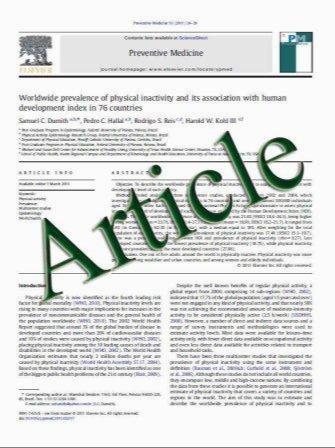Adenovirus E1B 55-Kilodalton Protein Is a p53-SUMO1 E3 Ligase That Represses p53 and Stimulates Its Nuclear Export through Interactions with Promyelocytic Leukemia Nuclear Bodies
- نوع فایل : کتاب
- زبان : انگلیسی
- مؤلف : Mario A. Pennella,1† Yue Liu,2† Jennifer L. Woo,3† Chongwoo A. Kim,4 and Arnold J. Berk1*
- چاپ و سال / کشور: 2010
Description
Oncogenic transformation by adenovirus E1A and E1B-55K requires E1B-55K inhibition of p53 activity to prevent E1A-induced apoptosis. During viral infection, E1B-55K and E4orf6 substitute for the substratebinding subunits of the host cell cullin 5 class of ubiquitin ligases, resulting in p53 polyubiquitinylation and proteasomal degradation. Here we show that E1B-55K alone also functions as an E3 SUMO1-p53 ligase. Fluorescence microscopy studies showed that E1B-55K alone, in the absence of other viral proteins, causes p53 to colocalize with E1B-55K in promyelocytic leukemia (PML) nuclear bodies, nuclear domains with a high concentration of sumoylated proteins. Photobleaching experiments with live cells revealed that E1B-55K tethering of p53 in PML nuclear bodies decreases the in vivo nuclear mobility of p53 nearly 2 orders of magnitude. E1B-55K-induced p53 sumoylation contributes to maximal inhibition of p53 function since mutation of the major p53 sumoylation site decreases E1B-55K-induced p53 sumoylation, tethering in PML nuclear bodies, and E1B-55K inhibition of p53 activity. Mutation of the E1B-55K sumoylation site greatly inhibits E1B-55K association with PML nuclear bodies and the p53 nuclear export to cytoplasmic aggresomes observed in E1A-E1B-transformed cells. Purified E1B-55K and p53 form high-molecular-weight complexes potentially through the formation of a network of E1B-55K dimers bound to the N termini of p53 tetramers. In support of this model, a p53 mutation that prevents tetramer formation greatly reduces E1B-55K-induced tethering in PML nuclear bodies and p53 nuclear export. These data indicate that E1B-55K’s association with PML nuclear bodies inactivates p53 by first sequestering it in PML nuclear bodies and then greatly facilitating its nuclear export.
JOURNAL OF VIROLOGY, Dec. 2010, p. 12210–12225 Vol. 84, No. 23 Received 10 July 2010/Accepted 9 September 2010


